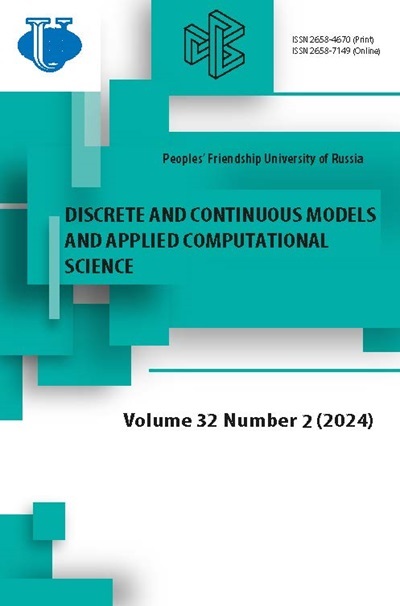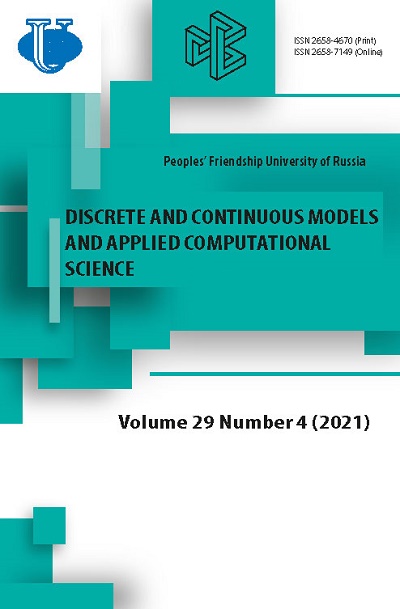Квантовая мереология в конечной квантовой механике
- Авторы: Корняк В.В.1
-
Учреждения:
- Объединённый институт ядерных исследований
- Выпуск: Том 29, № 4 (2021)
- Страницы: 347-360
- Раздел: Статьи
- URL: https://journals.rudn.ru/miph/article/view/29428
- DOI: https://doi.org/10.22363/2658-4670-2021-29-4-347-360
Цитировать
Полный текст
Аннотация
Любое гильбертово пространство составной размерности можно разложить в тензорное произведение меньших гильбертовых пространств. Такая факторизация дает возможность разложить квантовую систему на подсистемы. Мы предлагаем модель, основанную на конечной квантовой механике, для конструктивного изучения таких разложений.
Об авторах
В. В. Корняк
Объединённый институт ядерных исследований
Автор, ответственный за переписку.
Email: vkornyak@gmail.com
ORCID iD: 0000-0002-5712-2960
Doctor of Sciences in Physics and Mathematics, Leading researcher, Laboratory of Information Technologies
ул. Жолио-Кюри, д. 6, Дубна, Московская область, 141980, РоссияСписок литературы
- D. N. Page and W. K. Wootters, “Evolution without evolution: dynamics described by stationary observables,” Phys. Rev. D, vol. 27, pp. 2885- 2892, 12 Jun. 1983. doi: 10.1103/PhysRevD.27.2885.
- S. M. Carroll and A. Singh, “Quantum mereology: factorizing Hilbert space into subsystems with quasiclassical dynamics,” Physical Review A, vol. 103, no. 2, Feb. 2021. doi: 10.1103/physreva.103.022213.
- C. Cao, S. M. Carroll, and S. Michalakis, “Space from Hilbert space: recovering geometry from bulk entanglement,” Physical Review D, vol. 95, no. 2, Jan. 2017. doi: 10.1103/physrevd.95.024031.
- M. Woods, “The Page-Wootters mechanism 36 years on: a consistent formulation which accounts for interacting systems,” Quantum Views, vol. 3, p. 16, Jul. 2019. doi: 10.22331/qv-2019-07-21-16.
- P. Zanardi, “Virtual quantum subsystems,” Physical Review Letters, vol. 87, no. 7, Jul. 2001. doi: 10.1103/physrevlett.87.077901.
- P. Zanardi, D. A. Lidar, and S. Lloyd, “Quantum tensor product structures are observable induced,” Physical Review Letters, vol. 92, no. 6, Feb. 2004. doi: 10.1103/physrevlett.92.060402.
- A. M. Gleason, “Measures on the closed subspaces of a Hilbert space,” Journal of Mathematics and Mechanics, vol. 6, no. 6, pp. 885-893, 1957.
- V. V. Kornyak, “Quantum models based on finite groups,” Journal of Physics: Conference Series, vol. 965, p. 012023, Feb. 2018. doi: 10.1088/1742-6596/965/1/012023.
- V. V. Kornyak, “Modeling quantum behavior in the framework of permutation groups,” in EPJ Web of Conferences. EDP Sciences, 2018, vol. 173, p. 01007. doi: 10.1051/epjconf/201817301007.
- V. V. Kornyak, “Mathematical modeling of finite quantum systems,” Lect. Notes Comput. Sci., vol. 7125, pp. 79-93, 2012. arXiv: 1107.5675 [quant-ph].
- T. Banks, “Finite deformations of quantum mechanics,” 2020. arXiv: 2001.07662[hep-th].
- M. J. Collins, “On Jordan’s theorem for complex linear groups,” Journal of Group Theory, vol. 10, no. 4, pp. 411-423, 2007. doi: 10.1515/JGT. 2007.032.
- A. Rényi, “On measures of entropy and information,” English, in Proc. 4th Berkeley Symp. Math. Stat. Probab. 1, 1961, pp. 547-561.
- M. Van Raamsdonk, “Building up spacetime with quantum entanglement,” Gen. Rel. Grav., vol. 42, pp. 2323-2329, 2010. doi: 10.1142/S0218271810018529. arXiv: 1005.3035[hep-th].
- J. Maldacena and L. Susskind, “Cool horizons for entangled black holes,” Fortschritte der Physik, vol. 61, no. 9, pp. 781-811, Aug. 2013. doi: 10.1002/prop.201300020.
- M. A. Nielsen and I. L. Chuang, Quantum computation and quantum information, 10th anniversary edition. USA: Cambridge University Press, 2016.
















